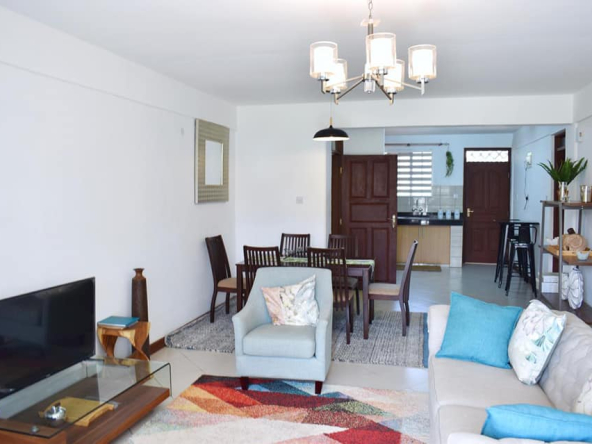In the spring of 1822 an employee in one of the world’s first offices – that of the East India Company in London – sat down to write a letter to a friend. If the man was excited to be working in a building that was revolutionary, or thrilled to be part of a novel institution which would transform the world in the centuries that followed, he showed little sign of it. “You don’t know how wearisome it is”, wrote Charles Lamb, “to breathe the air of four pent walls, without relief, day after day, all the golden hours of the day between ten and four.” His letter grew ever-less enthusiastic, as he wished for “a few years between the grave and the desk”. No matter, he concluded, “they are the same.”
The world that Lamb wrote from is now long gone. The infamous East India Company collapsed in ignominy in the 1850s. Its most famous legacy, British colonial rule in India, disintegrated a century later. But his letter resonates today, because, while other empires have fallen, the empire of the office has triumphed over modern professional life.
The dimensions of this empire are awesome. Its population runs into hundreds of millions, drawn from every nation on Earth. It dominates the skylines of our cities – their tallest buildings are no longer cathedrals or temples but multi-storey vats filled with workers. It delineates much of our lives. If you are a hardworking citizen of this empire you will spend more waking hours with the irritating colleague to your left whose spare shoes invade your footwell than with your husband or wife, lover or children.
Or rather you used to. This spring, almost overnight, the world’s offices emptied. In New York and Paris, in Madrid and Milan, they ready themselves for commuters who never come. Empty lifts slide up and down announcing floor numbers to empty vestibules; water coolers hum and gurgle, cooling water that no one will drink. For the moment, office life is over.

Even before coronavirus struck, the reign of the office had started to look a little shaky. A combination of rising rents, the digital revolution and increased demands for flexible working meant its population was slowly emigrating to different milieux. More than half of the American workforce already worked remotely, at least some of the time. Across the world, home working had been rising steadily for a decade. Pundits predicted that it would increase further. No one imagined that a dramatic spike would come so soon.
It’s too early to say whether the office is done for. As with any sudden loss, many of us find our judgment blurred by conflicting emotions. Relief at freedom from the daily commute and pleasure at turning one’s back on what Philip Larkin called “the toad work” are tinged with regret and nostalgia, as we prepare for another shapeless day of WFH in jogging bottoms.
But we shouldn’t let sentimentality cloud us. Offices have always been profoundly flawed spaces. Those of the East India Company, among the world’s first, were built more for bombast than bureaucracy. They were sermons in stone, and the solidity of every marble step, the elegance of every Palladian pillar, were intended to speak volumes about the profitability and smooth functioning within. This was nonsense, of course. Created to ensure efficiency, offices immediately institutionalised idleness. A genteel arms race arose as managers tried to make their minions work, and the minions tried their damnedest to avoid it. East India House, in which Lamb worked, could give call centres a run for their money in the art of micro-managing. At the start of the 19th century, the company introduced an attendance book for employees to sign when they arrived, when they left and every 15 minutes in between. Not that it proved much use. “It annoys Dodwell amazingly,” wrote Lamb. “He sometimes has to sign six or seven times while he is reading the newspaper.”
The first offices belonged to governments or quasi-government bodies like the East India Company. Running a country, let alone an empire, requires a lot of paper to be pushed and governing proved simpler when all those functionaries were in one place. But it was the Industrial Revolution that really changed things. Coal, steel and steam started to spin the wheels of the English textile industry ever faster and railways unspooled across the countryside. The new steam trains shuttled ever more workers into the cities, where they plumped themselves behind desks in order to practise ancillary professions – finance, law, retail – that flourished on the back of heavy industry. The rhythms of the countryside were left behind. Work, which had once been patchwork, piecemeal and often weather dependent, became the fabric of life itself.
The most transformatory aspect of offices was less the buildings themselves than the sheer amount of time we spent in them. This would have seemed alien to many earlier societies. Mary Beard, professor of classics at Cambridge University, notes that elite Romans strived to switch off as much as possible. “Our division between leisure and work is reversed in the Roman world. What we mostly do is work and, when we’re not working, we’re at leisure.” In Rome it was the other way round for the elite: “The normal state of play is otium, it’s leisure. And sometimes, you’re not at leisure, you’re doing business, which is negotium.” Though the English word “business” has an inbuilt aura of action and industry, the Latin neg-otium – literally “not leisure” – has an almost grudging sense of pleasure denied.
Romans didn’t have to go to a special place to work. Their tablets and styluses were every bit as portable as our own, a feature that elite Romans took full advantage of. Two thousand years ago Pliny the Younger, an author and lawyer, wrote a letter to his friend Tacitus. He had found, he said, a splendid new method of working. Instead of going about his business at a desk, he had decided that day to combine it with a boar hunt. He sat next to his nets “not with boar spear or javelin, but pencil and tablet, by my side”. After expanding on the pleasure of his method for some time, Pliny (the office boar) concluded that this was a remarkably productive way to work since “the mind is stirred and quickened into activity by brisk bodily exercise”. He concluded by advising Tacitus, “whenever you hunt, to take your tablets along with you”.
Few office workers have been indulged to this extent. In the 20th century, the people who had once designed factories turned their attention to offices. The moving parts in these machines were humans and their output merely paper but, it was reasoned, the same principles surely applied. In America teams armed with stopwatches, and a firm belief that a well-oiled office was a wonderful thing, recorded how long each task took. Anything that added extra tick-tocks of time received a cross in their recommendations. Frederick Winslow Taylor, who pioneered time-and-motion studies in the 1890s, concluded that workers functioned best when seated at lines of desks with flat tops, as though in a school-examination hall. The fact that other studies subsequently found that workers largely work best when being observed for studies on how well they work mattered not a jot. The open-plan office had been born.
When time-and-motion studies examine offices today, their results can be dispiriting. Office-work takes up not merely the bulk of our time but the best part of it, the hours when we are alert and alive. Home, and its occupants, has the husk. Most managers spend at least 20 hours a week in meetings, according to a study by Bain & Company in 2014. Over the course of a lifetime that amounts to nearly five full years. Many of these meetings, in wistful retrospect, might have profitably been skipped.
But getting work done has never really been the point of offices. In 2004 Corinne Maier, a French psychoanalyst who at the time was working at EDF, the French electrical giant, published a book called “Bonjour paresse”, or “Hello Laziness”. The critique of corporate culture became an instant international bestseller. Maier argues that, far from aiding efficiency, offices are “useless” since workers “lose a lot of time going to meetings and speaking the jargon and doing in fact very little work”. She found that she could “do everything I had to do in just two hours in the morning”. Thereafter she busied herself with her own projects, which included writing an academic thesis and several books. “I was very efficient,” she says, cheerfully. EDF, evidently considering that this was not the sort of efficiency it had in mind, sent her off to a disciplinary hearing.
Maier might have become a bestseller but on the whole writing about offices is not – at least in the West – an instant route to stardom. Lamb’s letters are typical. His correspondent for that first, springtime letter was William Wordsworth, the great Romantic poet, who filled his days with walks in the Lake District and his pages with dancing daffodils. Lamb, by contrast, filled his days in London’s financial district and his pages with the price of tea. Though Lamb’s is the life we lead, Wordsworth is far better remembered.
It’s not just poetry but fiction that tends to ignore the office (China, where top-selling novelists write books with such thrilling titles as “The Civil Servant’s Notebook”, is a rare exception). Though great writers have tackled the subject, including Balzac, Dickens, Flaubert, Melville and Kafka, they do so more in satire than celebration. Joshua Ferris, an American novelist, won literary plaudits for “Then We Came to the End”, a novel that sustained a narrative in the first-person plural to demonstrate the obliteration of individual character by corporate identity. But more often than not the office, which is ever present in our life, is a great absence in literature.
Poets have been even more scathing. John Betjeman wished for bombs to fall and “blow to smithereens/Those air-conditioned, bright canteens”. In “The Waste Land”, T.S. Eliot (who had once worked in Lloyds Bank) saw the crowds of commuters crossing London Bridge in terms of Dante’s vision of hell: “I had not thought death had undone so many.” Walt Whitman sneered at clerks as men “of minute leg, chalky face and hollow chest”.

There is more than a dash of superiority in such attacks, but there are good reasons to be critical of offices. Many of the more recent examples are aesthetic embarrassments. Where Ancient Rome had the Colosseum, Renaissance Florence had Brunelleschi’s dome and Byzantium had the Hagia Sophia, we have endless, interchangeable glass-and-steel boxes. This, says Thomas Heatherwick, a British designer, is because the design of offices – indeed all public buildings – has been “lazy”. In the past, he says, workplaces “could get away with just being a desk”, much as shops could get away with “just being somewhere which had stacks of socks or stacks of underpants”. The digital revolution means that such complacency risks redundancy. Now, says Heatherwick, there has to be good reason for you to leave your home, otherwise “why would you go?” Time for the office to sharpen up.
Like a dad at the disco, the office has been trying to do this for a while. Daring architects have broken the mould to construct buildings in the shape of gherkins, cheese graters and walkie talkies – and that’s just in London. To change the stale spaces inside, startups introduced ping-pong tables and ball pits (“dumb fun”, sniffs Heatherwick). Then they offered free food in an attempt to keep workers perpetually in their embrace. Who needs to go home for dinner, when your company will provide you with a tastier one than the pot noodle waiting in your cupboard? And then came WeWork, a sub-letting company that somehow drew cult-like adulation by giving out free biscuits and beer. It helped that its chief executive was Adam Neumann, a man who looks like Christ reimagined by Mattel, with a Ken-like sweep of hair, dazzling white teeth and a firm belief in his power to save us from the hell of offices without cucumber water and succulents. For a while everyone believed in Neumann. Until, suddenly, they didn’t. Last year, WeWork’s valuation fell to a sixth of the $47bn that had once been mooted and Neumann resigned. Offices, of course, needed to be more than a workplace with superior snacks. Heatherwick reckons they should be inspiring “temples” in which to toil, places of beauty that we can admire, even love. It is telling that though his company does have offices, he brands his practice a “studio”. The word office, says Heatherwick, “brought me down”.
Offices can be not just offensive to the eye but harmful to the body. Sitting isn’t quite the new smoking, but it certainly won’t do you any good. A life lived on one’s bottom increases the risk of heart disease, type-2 diabetes, some cancers and all manner of back problems. Offices also entrench social inequalities. The top dog is more likely to hire in his own image, perpetuating male privilege. In 2018 there were more men called Steve than there were women among the chief executives of FTSE 100 companies. Offices even tend to be more physically unpleasant places for women than for men: as a recent study showed, the ambient air temperature is generally set to suit “the metabolic rates of a 154-pound, 40-year-old man” (probably called Steve). Men are just fine; women freeze.
The office has further-reaching patriarchal ploys up its sleeve. Chief among these is its response to children. Or rather lack of it. For most of history, workplaces ignored children entirely (the run on deposits precipitated by the arrival of the Banks twins at their father’s place of work in “Mary Poppins” shows the dire consequences of offspring turning up at the office). The Angel in the House, as Victorians fondly referred to their wives, was assumed to handle all that. In the 20th century the angel lost her wings as women entered the workplace. Offices responded to this momentous social change by making no concessions at all. As a result, working women had to straddle the gap between angel and executive, a cause of immense and continuing stress. Even more tryingly, they had to endure endless stock photos of women in suits holding babies and tearing out their hair. A minor branch of the publishing industry sprang up offering books with querulous titles such as “I Don’t Know How She Does It”.
The office’s ongoing indifference to children has resulted in the social phenomenon that Emily Oster, professor of economics at Brown University and author of “Cribsheet”, a data-led guide to raising kids, calls “secret parenting”. Parents strive to keep up the old pretence that children don’t exist, deploying techniques that range from not putting up pictures of one’s children at work, to pretending that they themselves are ill so that they can care for genuinely sick infants lest, says Oster, people “think [they’re] prioritising parenting”. As a working parent, she says, “someone is always more or less running around in the background”.
Despite the commute and the colleagues, the sitting and the stale meetings, offices bring many of us something else too: joy. Lucy Kellaway, who wrote a long-running column in the Financial Times on the absurdities of office life, talks of the “great artificiality” we embrace the moment that we step into an office. “We pretend that our clothes are always in order and that we are entirely professional and impersonal. Whereas probably in our heads and definitely in our homes there is an awful lot of unravelling and farting going on.”
And what a wonderful thing that artifice can be. Now that we are all working from home, amid the children, the toast crumbs and the laundry, we are realising that the pretence of an orderly life at the office is also a liberation. It allows each day to have its own architecture, its rhythms of departure and arrival. Putting on a perfectly ironed silk shirt or a crisp suit and leaving the house may be contrived but it is also, says Kellaway, “one of the beauties of working life…It allows us to be a different person. And we’re all so fed up with who we are, the opportunity to be someone else, someone a little bit more impressive, is just so tempting.” When such an escape is denied us, that allure may only grow.
And so, for all the threat faced by the office, there is also cause for optimism about its future. These days the “hyper-physical…is so cherished,” notes Heatherwick. Sales of records are at their highest in years, book covers have rarely looked so beautiful. Though many of us might have been loth to admit it until this spring, all those desks and all those people, all that bustle and time-wasting, have their benefits.
Humans need offices. Online encounters may be keeping us alive as social beings right now, but work-related video meetings are too often transactional, awkward and unappealing. After the initial joy of peering into each other’s houses on Zoom, we are confronted with people’s heads looming even closer than we see them across the desk at work, and we gaze in horror – half of it self-awareness that we, too, must look awful – at thinning hair and double chins. We become freakish specimens rather than people. No Skype chat can replicate what Heatherwick calls the “chemistry of the unexpected” that you get in person. Offices may not fill the pages of poetry anthologies but, says Kellaway, they “can be as moving as anywhere on Earth. Because what moves us is not sitting at our computer, it’s the relationship that we have with people.”
For all his grumbling, Charles Lamb believed something similar too. When Wordsworth seems to have grown a trifle too smug about the sublime joys of the natural world, Lamb snapped back. “I don’t much care if I never see a mountain in my life.” But he did care for the city and he certainly loved offices. All his complaints were, he wrote, mere “lovers’ quarrels”. Above all, he loved his desk. For it was that “dead timber of a desk that makes me live”.•



